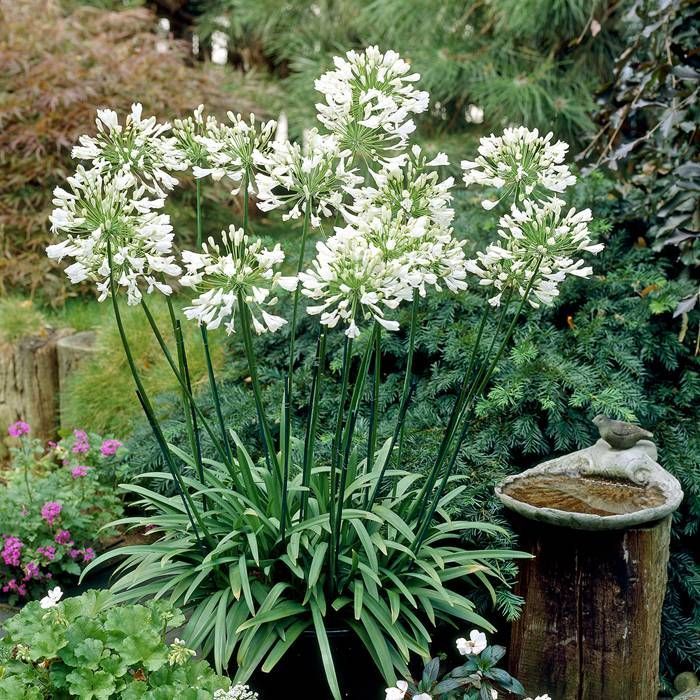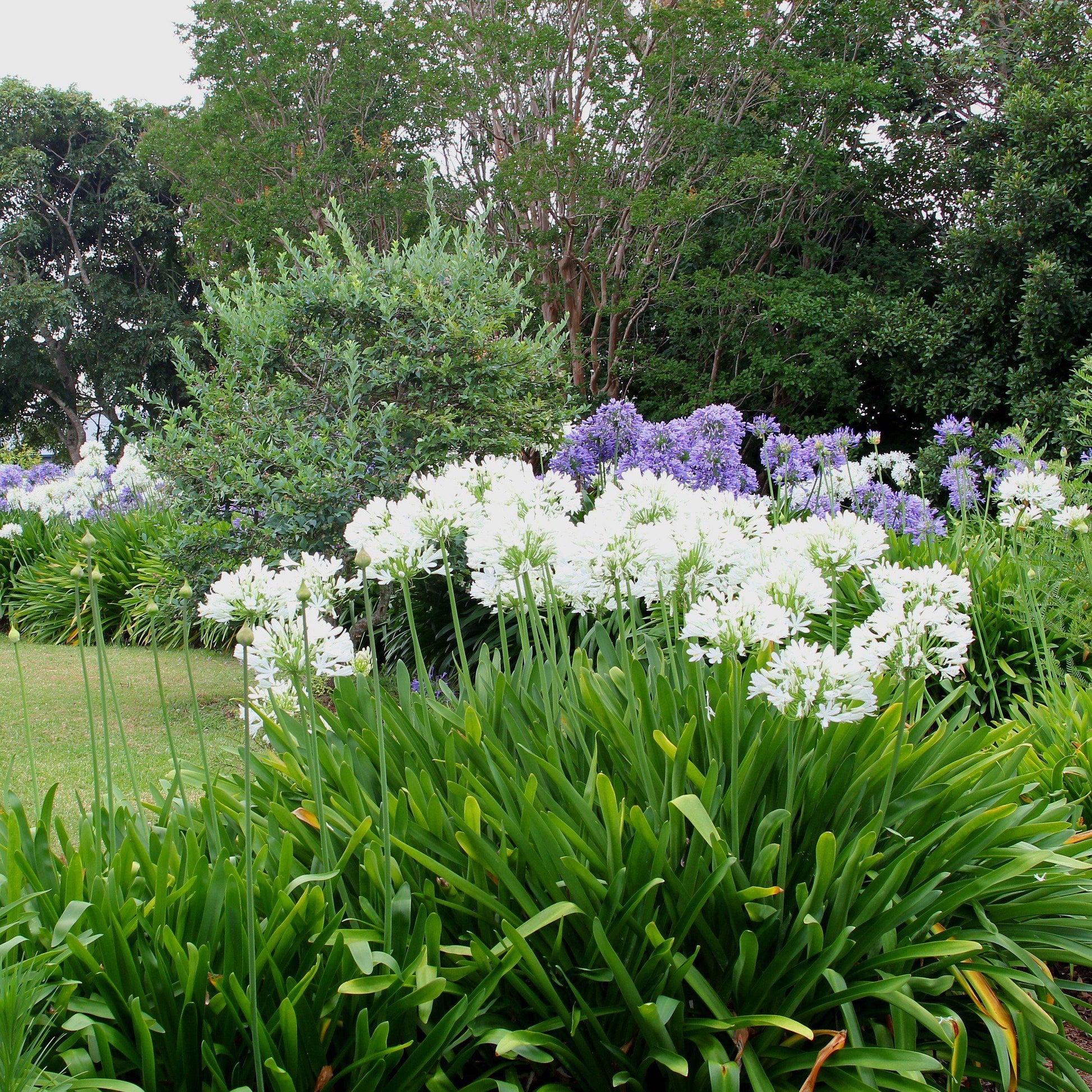Agapanthus Growing Conditions: Soil, Sunshine, and Watering
Agapanthus Growing Conditions: Soil, Sunshine, and Watering
Blog Article
Grasping the Art of Agapanthus Treatment: Crucial Steps for Healthy And Balanced Development and Vivid Blossoms
In the world of horticulture, the cultivation of agapanthus stands as a gratifying endeavor for those who look for to support these elegant blooming plants. With their striking blossoms and elegant vegetation, agapanthus has recorded the focus of gardeners worldwide. However, achieving ideal growth and dynamic blooms calls for a nuanced approach that encompasses numerous crucial steps. From picking the appropriate selection to mastering pruning techniques, the trip in the direction of growing thriving agapanthus plants is multifaceted and holds the vital to opening the full capacity of these herb gems.

Choosing the Right Agapanthus Selection

When choosing the right Agapanthus range for your yard, take into consideration factors such as climate viability, flower color, and growth practice. Agapanthus, commonly recognized as Lily of the Nile or African lily, can be found in a variety of shades varying from tones of blue and purple to white. Select a flower color that enhances your existing yard combination to develop a harmonious landscape. Additionally, consider the environment in your region to make certain the Agapanthus selection you choose can flourish in your particular conditions. Some varieties are more tolerant of cool temperatures, while others like warmer climates. Understanding the development routine of various Agapanthus ranges is vital for appropriate placement within your yard. Some selections have a clumping growth habit, perfect for boundaries or containers, while others have a more dispersing nature, appropriate for ground cover or mass growings. By carefully reviewing these elements, you can select the best Agapanthus range to enhance the elegance of your garden.
Ideal Growing Conditions
Considering the ideal ecological needs is vital for effective Agapanthus cultivation. Agapanthus plants are sensitive to chilly temperature levels and ought to be safeguarded from frost during winter season months.
To make certain healthy and balanced development and vivid blossoms, plant Agapanthus bulbs at a deepness of regarding 2-4 inches and area them 8-12 inches apart. Adding organic matter, such as compost, to the dirt can boost water drainage and fertility, advertising durable origin advancement. Mulching around the base of the plants assists keep wetness and reduces weed growth. Normal watering is vital, specifically during the expanding period, to keep the dirt consistently moist yet not soaked.
Watering and Feeding Tips
Maintaining appropriate wetness degrees and providing necessary nutrients are key elements in the treatment regimen for Agapanthus plants. When it comes to watering Agapanthus, it is vital to strike a balance. These plants favor regularly damp dirt yet are susceptible to root rot if overwatered.
Feeding Agapanthus is important for visit here promoting healthy growth and prolific blooms. Apply a balanced plant food, such as a 10-10-10 formula, in the very early spring as new growth emerges. By complying with these watering and fertilizing ideas, you can ensure your Agapanthus plants flourish and produce lively, resilient flowers.
Pruning Methods for Agapanthus
Trimming Agapanthus plants at the ideal times and with correct methods is critical for maintaining their health and promoting optimum development and flowering. The suitable redirected here time to prune Agapanthus is in late winter months or very early springtime prior to new growth arises. Begin by removing any kind of yellowing or dead fallen leaves near the base of the plant. Cut them as close to the ground as possible without damaging the arising shoots.
Deadheading spent blossoms can additionally redirect the plant's energy right into producing more blooms rather than establishing seeds. If you want to accumulate seeds for propagation, leave some blossoms to completely dry and mature on the plant.
Keep in mind to make use of tidy, sharp tools to make specific cuts and reduce the danger of introducing conditions. Agapanthus. Regular trimming will help maintain your Agapanthus looking neat and healthy while making sure a bountiful screen of stunning blossoms
Managing Common Parasites and Diseases
After guaranteeing proper pruning techniques for Agapanthus, it is crucial to attend to usual insects and diseases that can affect the wellness and vigor of these plants. One typical bug that impacts Agapanthus is the Agapanthus gall midge.
Another typical concern is fungal fallen leave spot, which presents as dark sores on the fallen leaves. To stop fungal conditions, ensure excellent air flow around the plants, avoid overhead watering, and get rid of any type of infected leaves immediately. Furthermore, Agapanthus plants can deal with origin rot if they are planted in inadequately draining pipes soil. To stop this, plant Agapanthus in well-draining dirt and prevent overwatering. By being cautious and taking punctual action versus bugs and diseases, you can aid your Agapanthus plants thrive and create dynamic blooms.

Final Thought
To conclude, grasping the art of agapanthus treatment entails picking the appropriate selection, providing ideal growing problems, correct watering and fertilizing, proper trimming strategies, and resolving usual parasites and diseases. By following these vital steps, you can guarantee healthy growth and dynamic blooms for your agapanthus plants. Remember to frequently keep track of and keep your plants to promote their total health and durability.
To guarantee healthy growth and vibrant blossoms, plant Agapanthus light bulbs at a depth of regarding 2-4 inches and room them 8-12 inches apart. By adhering to these watering and feeding suggestions, you can ensure your Agapanthus plants grow and create vibrant, lasting blossoms.
One typical insect that investigate this site impacts Agapanthus is the Agapanthus gall midge. In addition, Agapanthus plants can experience from root rot if they are grown in inadequately draining pipes soil. By adhering to these necessary actions, you can make sure healthy development and dynamic blooms for your agapanthus plants.
Report this page